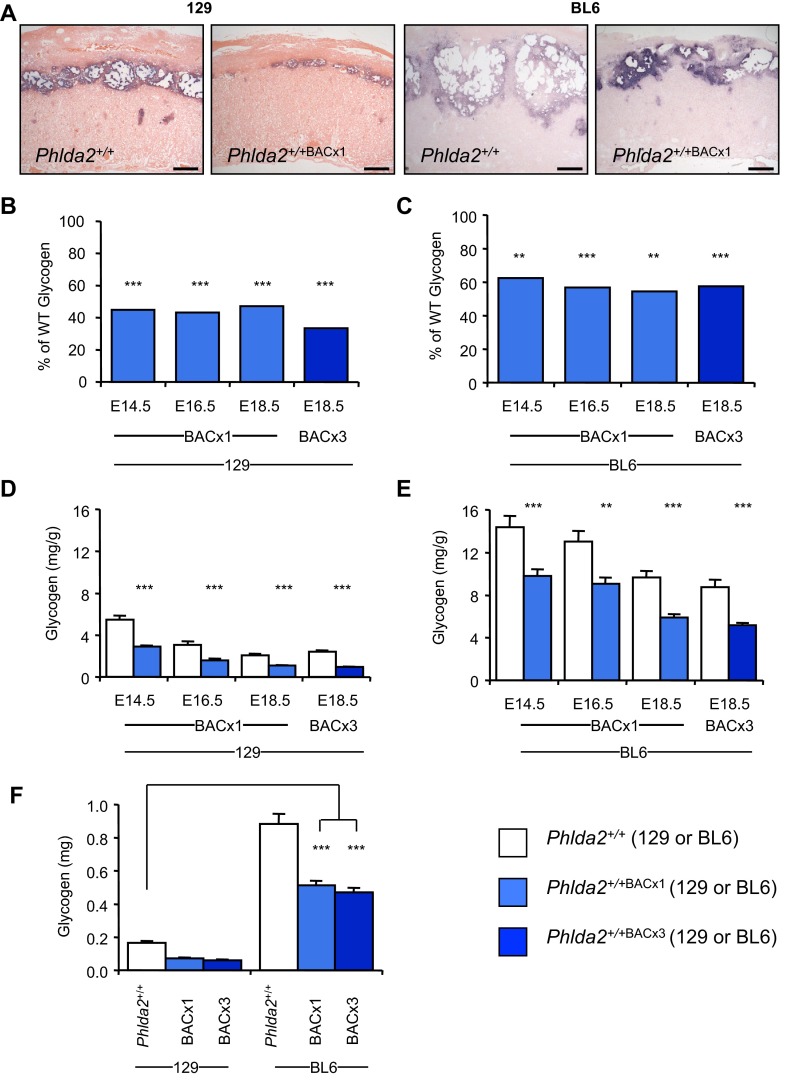Fig. 5.
Placental glycogen attenuates fetal growth restriction. (A) In situ hybridisation of Tpbpa riboprobe to E14.5 sections from Phlda2+/+(129) and Phlda2+/+BACx1(129) (2×) placenta in comparison to the same genotypes on the BL6 genetic background. Scale bars: 200 μm. (B) Biochemical determination of glycogen at E14.5, E16.5 and E18.5 for Phlda2+/+BACx1 and at E18.5 for Phlda2+/+BACx3 (4×) on the 129 background expressed as a percentage of values in non-transgenic placenta. (C) Biochemical determination of glycogen at E14.5, E16.5 and E18.5 for Phlda2+/+BACx1 and at E18.5 for Phlda2+/+BACx3 on the BL6 background expressed as a percentage of values in control placenta. (D) 129 glycogen data from panel B expressed as mg/g of placenta. (E) BL6 glycogen data from panel C expressed as mg/g of placenta. (F) Comparison of total glycogen stored in E18.5 placenta on the 129 versus BL6 background. Compromised (Phlda2 overexpression) BL6 placentae contain three times more glycogen than that found in the uncompromised (Phlda2 wild-type expression) 129 placentae. Numerical data is given in supplementary material Table S5. **P<0.01, ***P<0.005.

